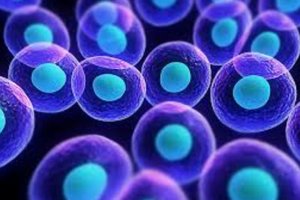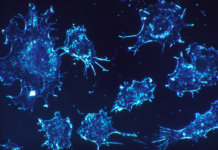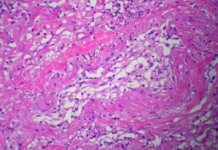Getting rid of senescent cells for healthy aging
Cell senescence, one of the 9 causes of aging described in The Hallmarks of Aging [1], is defined as a state of cell cycle arrest along with phenotypic changes [1,2]. This process is induced by various stresses like DNA damage, telomere shortening or inflammation. The number of senescent cells increases with age in multiple tissues, during pathologies or following chemotherapy [2]. Senescence is thought to cause tissue and organ dysfunction with age. The increased number of senescent cells during aging can be explained by the decrease in their clearance and, possibly, by their increased natural generation, although the last cause is not accepted by all. In a recent study published in Nature [3], a team of scientists has shown that a rise of the abundance of senescent cells leads to an increasing number of physical dysfunctions in young and old mice, and that the suppression of these cells is associated with an extended healthy lifespan in mice.

Indeed, in their experiments, scientists induced physical dysfunctions in young mice after transplanting senescent cells. These results were obtained with a small number of senescent cells, and an even smaller number of these cells was sufficient in elderly mice to contribute to loss of physical function and decreased survival [3]. For researchers, these results attest of the impact of senescent cells on physical dysfunctions observed with age and of their part in the lifespan of mice [3]. Thus, senescent cells could become a therapeutic target for improving healthy lifespan.
Which therapeutics against the senescent cells ?
Recently a group of compounds called senolytics, drugs that specifically target and eliminate senescent cells, have been developed. Among them, quercetin and dasatinib were the first to be studied [4]. The same team of researchers had previously shown that these two compounds were capable of eliminating human and murine senescent cells [4]. In their new study, they sought to verify these observations by testing the effect of the same mixture of senolytics on human adipose tissue. Obtained from obese people, these tissues show a strong accumulation of senescent cells [3]. These cells release a variety of factors such as pro-inflammatory cytokines and chemokines, which contribute to the physical dysfunction of tissues and organs during aging. The findings of these experiments showed that administration of senolytics was associated with a decrease in the number of senescent cells as well as a decrease of the cytokine secretion in human tissues, emphasizing the importance of signalling and communication between cells in aging processes[3]. Finally, their study also found that eliminating senescent cells attenuated physical dysfunctions and increased the healthy life span of mice, even the elderly [3].
This new study on senescent cells provides evidence of their involvement in the physical dysfunctions that occur with the aging of mice and leads to a reduction in their lifespan. These cells can be targeted by a new category of drugs that eliminate them, senolytics, thus reducing physical dysfunctions. According to the study, eliminating the load of senescent cells found during aging would also extend the lifespan. Senolytics could potentially become a new class of active compounds that fight aging and improve the healthy lifespan of older people.
References :
[1] Carlos Lopez-Otin, Maria A. Blasco, Linda Partridge, Manuel Serrano and Guido Kroemer, The Hallmarks of Aging, Cell 153, June 6, 2013, 1194-1217.
[2] Salama et al. Cellular senescence and its effector programs, GENES & DEVELOPMENT 28:99–114.
[3] Ming Xu, Tamar Pirtskhalava, Joshua N. Farr, Bettina M. Weigand, Allyson K. Palmer, Megan M. Weivoda, Christina L. Inman, Mikolaj B. Ogrodnik, Christine M. Hachfeld, Daniel G. Fraser, Jennifer L. Onken, Kurt O. Johnson, Grace C. Verzosa, Larissa G. P. Langhi, Moritz Weigl, Nino Giorgadze, Nathan K. LeBrasseur, Jordan D. Miller, Diana Jurk, Ravinder J. Singh, David B. Allison, Keisuke Ejima, Gene B. Hubbard, Yuji Ikeno, Hajrunisa Cubro, Vesna D. Garovic, Xiaonan Hou, S. John Weroha, Paul D. Robbins, Laura J. Niedernhofer, Sundeep Khosla, Tamara Tchkonia and James L. Kirkland, Senolytics improve physical function and increase lifespan in old age, Nature medicine, https://doi.org/10.1038/s41591-018-0092-9
[4] Zhu Y, Tchkonia T, Pirtskhalava T, et al. The Achilles’ heel of senescent cells: from transcriptome to senolytic drugs. Aging Cell. 2015;14(4):644-658
Anne Fischer

Author
Auteur
Anne is studying medicine science at the Institute of Pharmaceutical and Biological Science in Lyon and she has graduated with a Bachelor’s degree in molecular and cellular biology at the University of Strasbourg.
More about the Long Long Life team
Anne étudie les sciences du médicament à l’Institut des Sciences Pharmaceutiques et Biologiques de Lyon. Elle est titulaire d’une licence en biologie moléculaire et cellulaire de l’Université de Strasbourg.
En savoir plus sur l’équipe de Long Long Life














